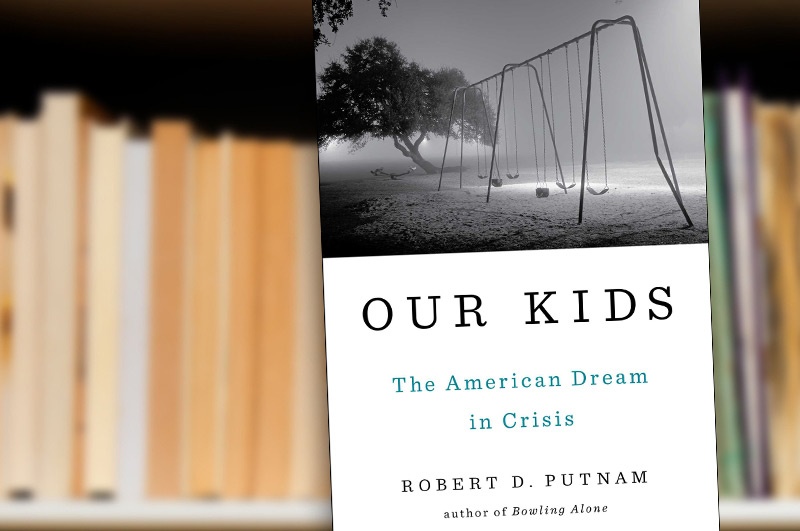Robert Putnam’s New Book Makes Us See the Invisible Dynamics of Widening Inequality

Robert Putnam’s new book, Our Kids: The American Dream in Crisis is an important book. It has been criticized a bit by social science reviewers because it doesn’t challenge the power and money behind the politics that have created the problems it describes, but I would guess that Putnam’s purpose is different. This is a book written to make us see what is invisible to most of us: “Ultimately, growing class segregation across neighborhoods, schools, marriages (and probably also civic associations, workplaces, and friendship circles) means that rich Americans and poor Americans are living, learning, and raising children in increasingly separate and unequal worlds, removing the stepping-stones to upward mobility—college going classmates or cousins or middle-class neighbors, who might take a working-class kid from the neighborhood under their wing.” (p. 41) The book is written for a popular—not an academic—audience to illuminate the social science research on which it is based.
While most of us will notice a new stadium or a new convention center or revitalization downtown, we are less likely to see that a neighborhood or community is changing demographically and we are likely to be blind to the social dynamics at work or the meaning of the change until perhaps years later. Putnam turns our attention directly to growing inequality in the institutions that matter to children: the family, the parents’ marriage and parenting style, the school, the neighborhood.
I confess that my own fascination with Our Kids is my interest in public school inequality and our society’s wrong headed approach to addressing achievement gaps. After all, Putnam’s book is evidence that the great wave of standardized testing, sanctions for so-called “failing” schools, and privatization of schools cannot possibly address the primary cause of achievement gaps: rapidly widening economic inequality and segregation by family income. Putnam explains, “Our contemporary public debate recognizes this problem but assumes it is largely a ‘schools problem.’ On the contrary we have seen that most of the challenges facing poor kids are not caused by schools.” (p 231) Schools, according to Putnam’s research, are sites where we can observe inequality but not its primary cause: “In fact, all of the factors that we’ve discussed so far in this book—family structure, parenting, childhood development, peer groups, extracurricular opportunities—have contributed to the widening gap in college graduation rates in recent decades, along with the neighborhood and community influences….” (pp. 188-189)
Four years ago the Stanford University sociologist Sean Reardon published two studies that startled people watching trends in public school achievement. Reardon documents that the proportion of families in major metropolitan areas living in either very poor or very affluent neighborhoods increased from 15 percent in 1970 to 33 percent by 2009, and the proportion of families living in middle income neighborhoods declined from 65 percent in 1970 to 42 percent in 2009. Reardon also demonstrates that along with growing residential inequality is a simultaneous jump in an income-inequality school achievement gap among children and adolescents. The achievement gap between students with income in the top ten percent and students with income in the bottom ten percent is 30-40 percent wider among children born in 2001 than those born in 1975, and is now twice as large as the black-white achievement gap. Putnam quotes Reardon’s research and then he explains what it means in the daily lives of families and children.
I describe Reardon’s conclusions again and again in this blog, because I think we all have to Robert Putnam’s New Book Makes Us See the Invisible Dynamics of Widening Inequality | janresseger:
